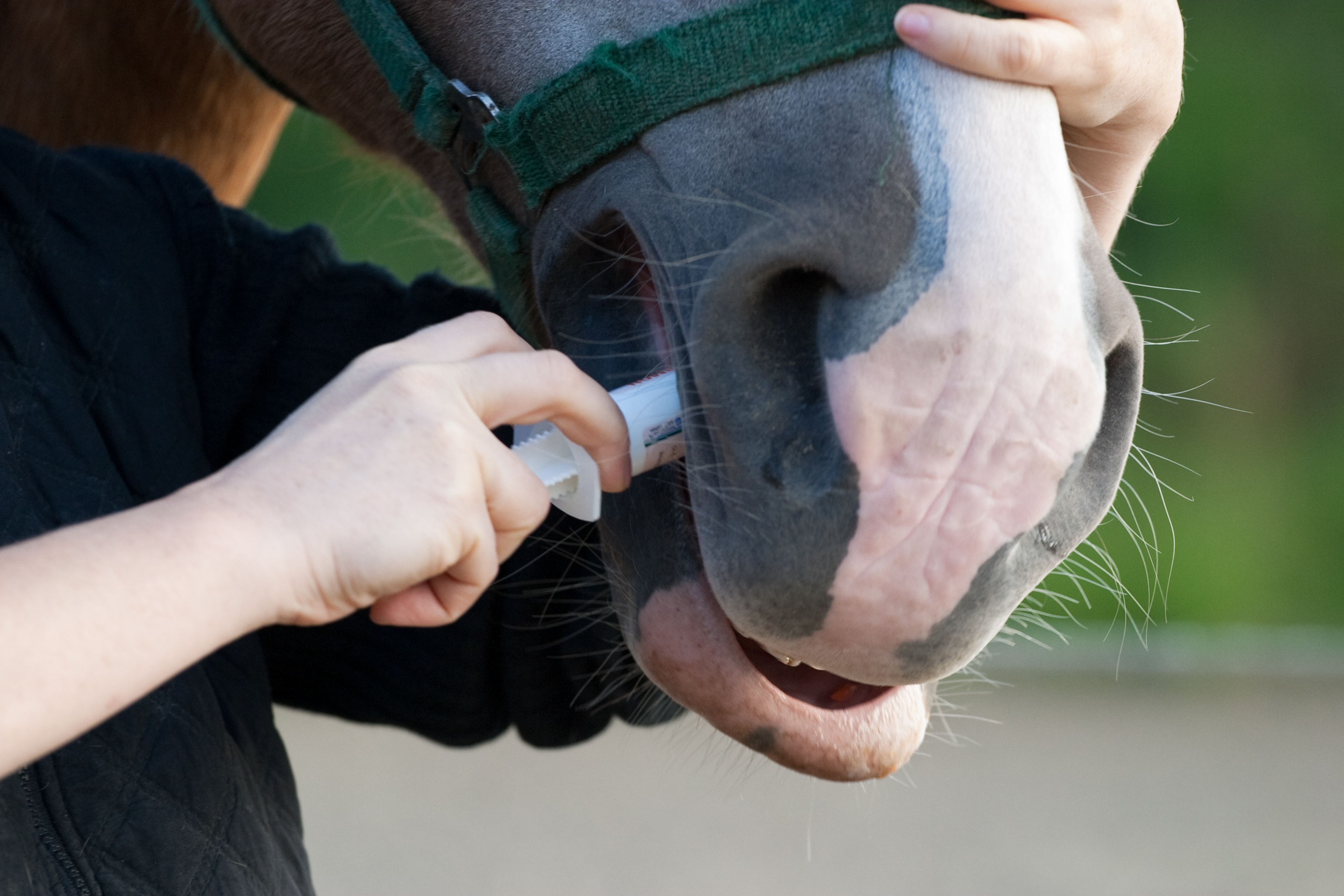Home > Horse Care > Efficacy of targeted deworming confirmed
Efficacy of targeted deworming confirmed
- November 18, 2025
- ⎯ Editors of EQUUS
A long-term study confirms the success of so-called surveillance deworming protocols in slowing down the development of resistance in internal parasites in horses.

Also called targeted deworming, surveillance deworming uses fecal egg counts to determine treatment intervals. It is a departure from the traditional, calendar-based deworming regimens used for decades.
The benefit of targeting
“Fecal egg counts are a diagnostic methodology allowing us to identify horses that are in real need of treatment,” says Thomas Geurden, DVM, PhD, with Zoetis, which funded the research. The benefits of this approach have previously been documented. But, he says, “this is the first study where the results of such a follow-up were combined with predictive modeling to evaluate the impact of the changes in treatment schedule on resistance development.”
Methodology
The study followed pastured horses on two sites in Belgium over three consecutive summers. Historically, the horses at both farms were treated as often as six times a year with ivermectin and four times a year with moxidectin. Treatment intervals were determined by the calendar. Fecal egg counts revealed shortened egg re-appearance times in some of the treated horses. This prompted the farm owners to express concern about resistance to anthelmintic treatment among parasites on the property.
For the study, researchers treated both groups of horses with ivermectin and moxidectin twice a year—once in spring and once in autumn. The researchers also conducted fecal egg count tests every two weeks during the summer months, when parasites are most prevalent. They administered a pyrantel-based deworming product to any horse with more than 250 eggs per gram of feces.
The fecal egg count data was entered into a database, along with information about the individual horses and local weather patterns. This information was then imported into a cyathostomin (small strongyle) life-cycle model to evaluate the effects of the new treatment program on pressure for resistance, compared to the previous high-frequency treatment schedule.
What the data showed
The data showed that treating the entire herd four to six times a year led to parasite resistance two to three times faster than less frequent deworming driven by fecal egg count tests. Furthermore, there was no increase in parasitic disease over the three-year period in either group.
Geurden says that although this study was conducted in Belgium, the findings are applicable in other parts of the world. “Each climate, microclimate and management system can bring specific infection dynamics,” he says. “In the [study] model, for example, a clear distinction is made between moderate climates, tropical climates and arid climates. They do have an impact and are indeed a key driver for transmission dynamics. The take-home message is that it is always beneficial to invest into understanding the baseline infection level for the animals or the herd, and to adapt the treatment schedule to the needs identified.”
Guerden suggests that horse owners ask their veterinarians about implementing a targeted deworming protocol. “It’s always good to talk to a professional when developing or optimizing the sampling and treatment routine. We encourage owners to talk with their veterinarian about their deworming program.”
Reference: “Three-year study to evaluate an anthelmintic treatment regimen with reduced treatment frequency in horses on two study sites in Belgium,” Veterinary Parasitology, October 2021





